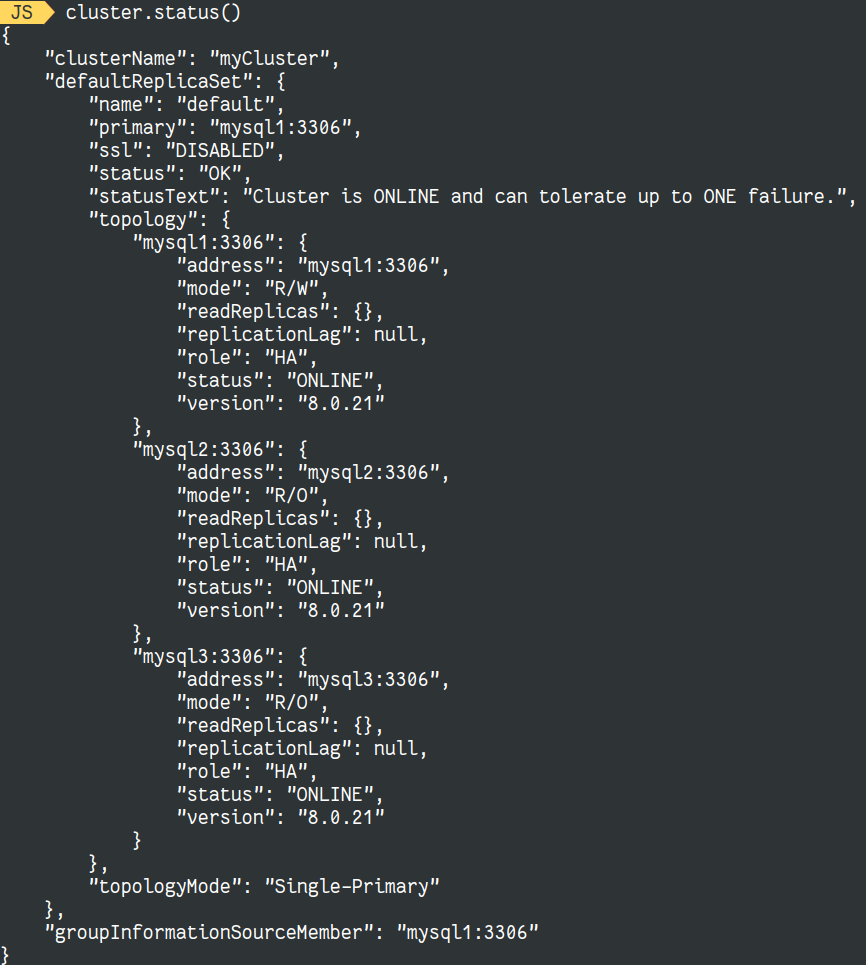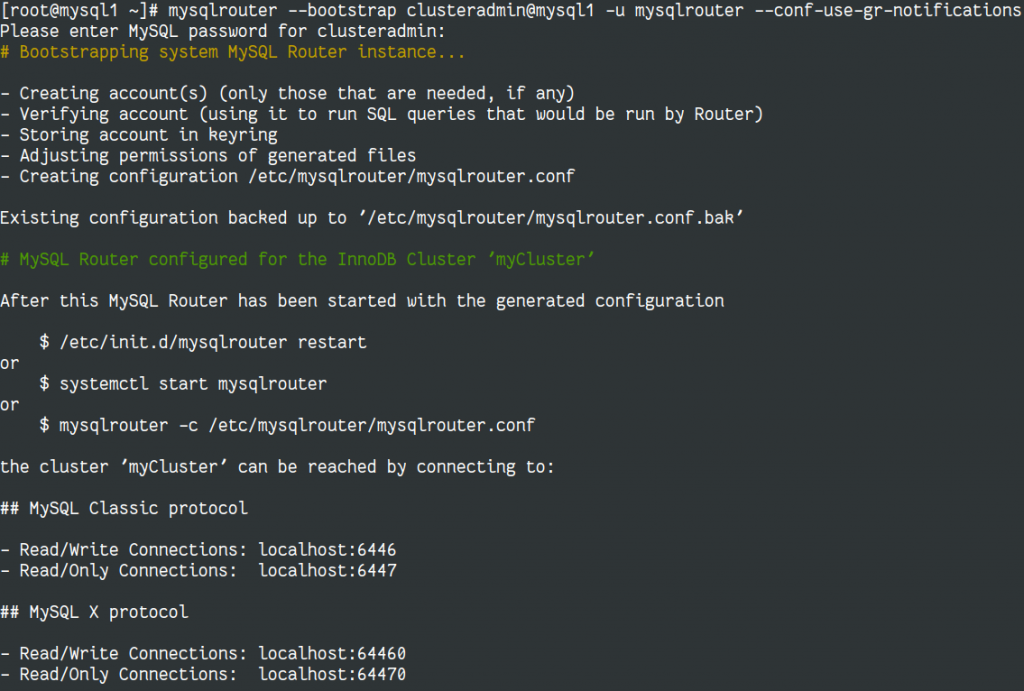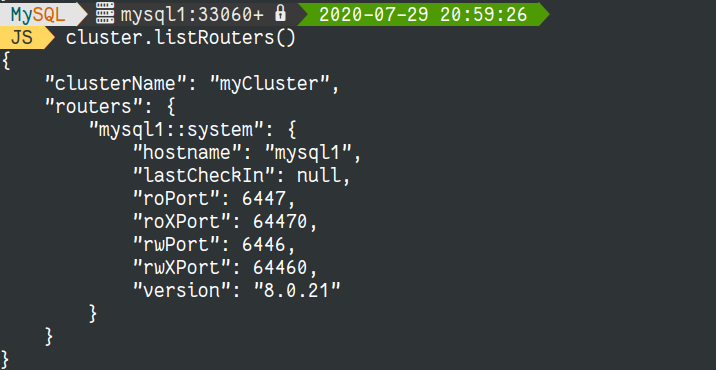I wanted to be brave and I installed MySQL Group Replication manually…. it was painful !
Then I realized that managing those servers and especially deal with MySQL Routers was even more painful !
What are my options now ? Is there a solution or do I need to restart from scratch ?
Asking the answer is already answering it… and once again MySQL Shell at the rescue.
MySQL Group Replication
I’ve configured everything manually. I also loaded group_replication and clone plugins and finally after having bootstrapped my Group here is what I have:
mysql> select member_host, member_portport, member_statestate, member_rolerole, member_versionversionfrom performance_schema.replication_group_members; +-------------+------+--------+-----------+---------+ | member_host | port | state | role | version | +-------------+------+--------+-----------+---------+ | mysql2 | 3306 | ONLINE | SECONDARY | 8.0.21 | | mysql3 | 3306 | ONLINE | SECONDARY | 8.0.21 | | mysql1 | 3306 | ONLINE | PRIMARY | 8.0.21 | +-------------+------+--------+-----------+---------+
Let’s install MySQL Shell:
[root@mysql1 ~]# dnf install mysql-shell -y
MySQL InnoDB Cluster
Now we can start MySQL Shell and create our InnoDB Cluster importing our existing Group !
If we don’t have a dedicated user to manage the cluster and rootis only able to connect to localhost (which is always better), we need to create a user with the required privileges. This must be done on the Primary member:
CREATE USER 'clusteradmin' identified by 'MyPassw0rd';
GRANT RELOAD, SHUTDOWN, PROCESS, FILE, SELECT, SUPER, REPLICATION SLAVE,
REPLICATION CLIENT, REPLICATION_APPLIER, CREATE USER, SYSTEM_VARIABLES_ADMIN,
PERSIST_RO_VARIABLES_ADMIN, BACKUP_ADMIN, CLONE_ADMIN, EXECUTE
ON . TO clusteradmin@'%' WITH GRANT OPTION;
GRANT ALTER, ALTER ROUTINE, CREATE, CREATE ROUTINE, CREATE TEMPORARY TABLES,
CREATE VIEW, DELETE, DROP, EVENT, EXECUTE, INDEX, INSERT, LOCK TABLES, REFERENCES,
SHOW VIEW, TRIGGER, UPDATE
ON mysql_innodb_cluster_metadata.* TO clusteradmin@'%';
GRANT INSERT, UPDATE, DELETE ON mysql.* TO clusteradmin@'%';
Now we can connect to our Primary member with the new credentials:

As you can see I connected to the name (or IP), mysql1, that will be used through the cluster and not localhost,
It’s time to migrate our Group into InnoDB Cluster:

The command is dba.createCluster('name of cluster', {adoptFromGR: true}).
The content of this option in the inline help (\h dba.createCluster) is:
adoptFromGR allows creating an InnoDB cluster from an existing unmanaged
Group Replication setup, enabling use of MySQL Router and the shell
AdminAPI for managing it.
Now we have a full working cluster ready to be used with MySQL Router and managed by MySQL Shell:

MySQL Router
And to bootstrap MySQL Router:
mysqlrouter --bootstrap clusteradmin@mysql1 -u mysqlrouter --conf-use-gr-notifications
Example:

And now that we are fully using MySQL InnoDB Cluster 8.0.21, we can also get the information related to the Routers:

Conclusion
You don’t have anymore excuses to not use MySQL InnoDB Cluster, and I highly recommend everybody using native Group Replication for a single cluster topology to migrate to MySQL InnoDB Cluster. This will make your life much easier !